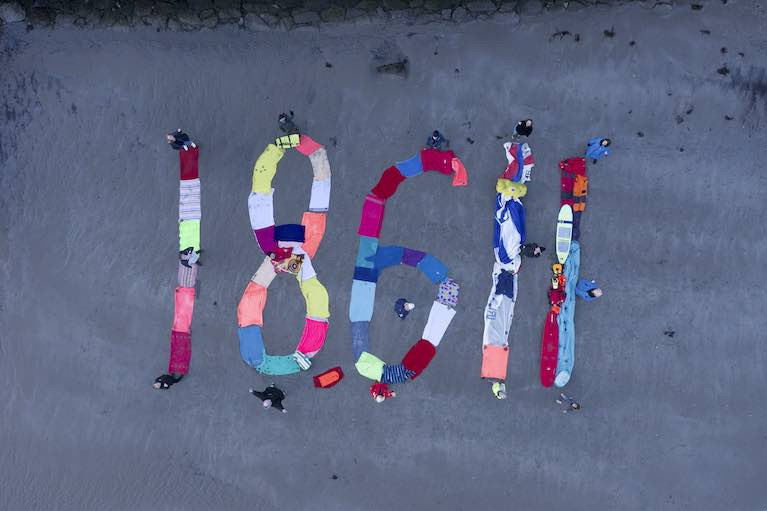A “giant-size” towel collage has been spread out at Blackrock’s Seapoint shoreline in Dublin Bay on Saturday to highlight the need for action over Dublin Bay water quality.
Open water swimmers suspended hostilities over whether dry robes or towels were more socially acceptable to participate in the peaceful initiative - at a social distance.
SOS Dublin Bay, which organised the gesture, is calling for increased testing of bathing water quality.
It is seeking real-time reporting of results “in recognition of all-year-round bathing which has become more common in Dublin”.
SOS Dublin Bay chairman Gerry Jones said record numbers of people were now swimming in the bay all year round.
He said that “local authorities need to recognise this reality by ensuring that bathing water quality readings are provided on an ongoing basis to the general public”.
He said there should be regular publication of all appropriate public health guidance particularly when the water is polluted.
“Thousands of people are now taking to the waters in Dublin Bay every day, yet we are simultaneously witnessing the appalling spectacle of raw sewage being dumped into the bay at Ringsend after heavy periods of rainfall,” he said.
 A scene at the Forty Foot bathing place at the southern tip of Dublin Bay during Winter 2020
A scene at the Forty Foot bathing place at the southern tip of Dublin Bay during Winter 2020
“We can’t put people’s health on hold while we wait for a promised upgrade of the Ringsend sewage treatment plant which won’t happen till at least 2025,” he said.
There are “ creative interim solutions” at to prevent Irish Water dumping sewage into the Liffey estuary and onward into the bay, he said, and SOS Dublin Bay aims to publish several proposals in the new year.
The Environmental Protection Agency (EPA) has acknowledged the risks to water quality after periods of heavy rainfall which result in overflow from storm drains and from the Ringsend sewage treatment plant, among other sources.
Rainwater run off at Sandycove Point on Dublin Bay from Afloat Magazine on Vimeo.
However, it says it is awaiting a review of the EU Bathing Water Quality directive before recommending any legislative changes to allow for greater frequency of , and more detailed scope of, testing here.
Under current regulations, local authorities are only required to test bathing water quality once a month between May and September. Some local authorities test more frequently, but results are slow.
The tests under the EU bathing water quality directive are limited to E.coli (EC) and Intestinal enterococci (IE), based on World Health Organisation research.
 Dublin Bay swimmers call a truce in Dry Robe wars and lay out their towels in support of a cleaner Dublin Bay - 18611 is the current number of signatures to the online petition for a cleaner bay Photo: One minute forty
Dublin Bay swimmers call a truce in Dry Robe wars and lay out their towels in support of a cleaner Dublin Bay - 18611 is the current number of signatures to the online petition for a cleaner bay Photo: One minute forty
University College Dublin (UCD) microbiologist Prof Wim Meijer explains that most E.coli are harmless.
However, VeroToxigenic E coli strains, contracted from ingesting water contaminated with animal faeces or from undercooked meat or contaminated salads, produce a powerful toxin which can cause “a range of symptoms, from bloody diarrhoea to kidney failure and may cause fatalities”
Prof Dearbháile Morris, director of NUI Galway (NUIG) Ryan Institute’s Centre for One Health, said current testing systems are outdated, as they only look for the total number of e-coli in a 100ml sample and not the detail.
A system for live bathing water monitoring named EU SWIM is at an advance stage, co-ordinated by UCD computer scientist Prof Gregory O’Hare and involving Prof Meijer.
The SOS petition is here

























